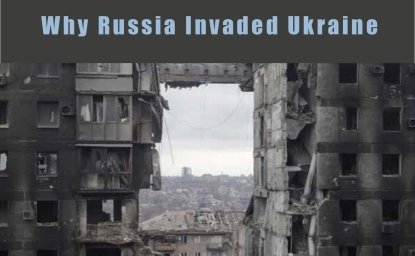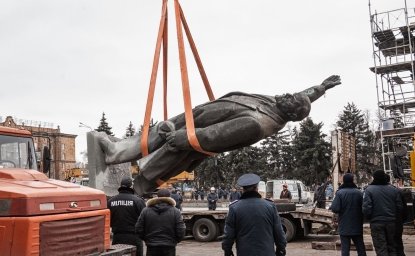Kennan Cable No. 60: Bested by Russia: Abe’s Failed Northern Territories Negotiations

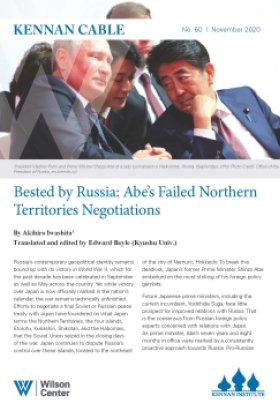
By Akihiro Iwashita[1]
Translated and Edited By Edward Boyle
Russia’s contemporary geopolitical identity remains bound up with its victory in World War II, which for the past decade has been celebrated in September as well as May across the country. Yet while victory over Japan is now officially marked in the nation’s calendar, the war remains technically unfinished. Efforts to negotiate a final Soviet or Russian peace treaty with Japan have foundered on what Japan terms the Northern Territories, the four islands, Etorofu, Kunashiri, Shikotan, and the Habomais, that the Soviet Union seized in the closing days of the war. Japan continues to dispute Russia’s control over these islands, located to the northeast of the city of Nemuro, Hokkaido. To break this deadlock, Japan’s former Prime Minister Shinzo Abe embarked on the most striking of his foreign policy gambits.
Future Japanese prime ministers, including the current incumbent, Yoshihide Suga, face little prospect for improved relations with Russia. That is the consensus from Russian foreign policy experts concerned with relations with Japan. As prime minister, Abe’s seven years and eight months in office were marked by a consistently proactive approach towards Russia. Pro-Russian administrations are a rarity in Japanese political history, and this one is now at an end. In retrospect, Abe’s losses proved to be Russia’s gains, and there is no appetite in Russia for the country to surrender the advantages gained under Abe’s term.
Since the start of his second term in 2012, Abe met with President Vladimir Putin on 27 occasions. He visited Russia on 11 occasions, while Putin only made the trip to Japan twice. Prior to his famous appearance in December 2016, Putin had not visited Japan in 11 years.
For Russia, the Abe era was a fruitful one. In 2014, Russia was isolated by the West over its aggressions in Ukraine. Abe ignored President Barack Obama’s criticism that Putin could not be trusted, and continued dealing with Russia on the basis of their personal relationship. Even after Russia was expelled from the G8, its global isolation was mitigated by Japan. At the December 2016 meeting between the leaders, while Putin was schmoozing with Abe and Japan’s press corps in Tokyo, the Council of Europe had just agreed to extend its sanctions against Russia.
The lack of any benefit to Japan for these efforts is all too apparent today. Russia’s minister of foreign affairs, Sergei Lavrov, has declared that “we will not resolve the territorial problem as a condition for a peace treaty,” that “Russia’s sovereignty over the Southern Kurils [Russia’s name for the islands] must be recognized,” and that “they should not be called the Northern Territories.” These declarations were met with silence from Abe’s administration. As Chief Cabinet secretary at the time, Yoshihide Suga would explain that negotiations must be allowed to proceed (a position that he continues to maintain as the current prime minister). Then-Foreign Minister Taro Kono would tersely respond with a “next question, please” to any inquiries about the Northern Territories. While Russia’s position was clear and its stubborn diplomacy a success, it will never find a more amenable negotiating partner than Tokyo under Abe.
The Abe Approach
Abe’s foreign policy approach toward Russia has shifted the diplomatic balance significantly, but, as far as Japan is concerned, in the wrong direction.
When he first came to power in 2000, Putin stated that Russia had an obligation to observe the Soviet-Japanese Joint Declaration of 1956, and accepted that the islands Shikotan and the Habomais would be transferred to Japan once a peace treaty was signed. In doing so, he became the first Soviet or Russian leader since the signing of the Joint Declaration to publicly affirm its validity. In response, many in Japan believed that the return of two of the four islands, at a minimum, was now possible.
However, Putin’s position started to shift around September 2005. During his visit to Japan in November of that year, Putin explained during talks with Prime Minister Junichiro Koizumi that no transfer of Etorofu and Kunashiri was possible, while that of Shikotan and Habomais would not be without conditions. He also refused to accept that the Tokyo Declaration of 1993[2] envisaged that the conclusion of a peace treaty would follow a decision on sovereignty over the four islands.
Japanese foreign ministry officials involved with those talks had argued that negotiations with Putin were not going anywhere, and that talks should be halted. However, when he returned to the premiership in December 2012, Abe and the Prime Minister’s Office did not take this view. At a minimum, they filtered out opinions at odds with their ambitious goals.
Abe and his aides thought that since Putin had previously recognized the 1956 Joint Declaration, some sort of agreement could be reached on Etorofu and Kunashiri. If not, at least Japan would be able to secure Shikotan and the Habomais, as stated in the Declaration. Therefore, according to this line of reasoning, Japanese foreign ministry officials and Russia experts warning about the dangers of pressing on with negotiations were clearly fools.
Takaya Imai, the special advisor to the prime minister (slyly referred to as the “real prime minister”) got to work. The Prime Minister’s Office sidelined the foreign ministry and threw its energies into inviting Putin to Japan and getting the Northern Territories issue resolved.
By 2016, President Obama was nearing the end of his term in office and was working with America’s allies to isolate Putin. Yet in Japan, the Cabinet Office, led by elite bureaucrats from the Ministry of Economy, Trade and Industry, began to offer plans for economic cooperation to Putin. Tokyo envisaged this overture as the opening move in a diplomatic game between Japan and Russia.
With Putin due to visit Japan in December 2016, public enthusiasm was swept along by a wave of puff pieces in certain newspapers, talking of an “initial return of two islands” (Yomiuri Shimbun) and the “joint administration of Etorofu and Kunashiri” (Nikkei Shimbun). Expectations were high for some sort of “two islands plus alpha” solution, which would see Shikotan and the Habomais returned and further negotiations and concessions on the other two islands.
However, Putin never moved his most important piece, the territorial issue. In the interviews he conducted for Yomiuri Shimbun and Nippon TV on the eve of his visit to Japan, Putin merely repeated what he had told Koizumi.
When pressed after the December 2016 Abe-Putin Summit on the lack of concrete results, the Cabinet Office relayed the following two developments. First, at the outset of the meeting a letter from a group of former islanders living in exile in Japan was handed to Putin asking him to grant their wishes. Second, it was announced that in order for talks not to get bogged down in questions of sovereignty over the four islands, negotiations had begun over conducting “joint economic activities” on the islands. These two developments were offered to provide a veneer of progress and diplomatic cover for Abe.
Nevertheless, both developments were freighted with problems for Japan. The letter to Putin was reportedly written by Sakiko Suzuki, an activist born on Etorofu, one of the disputed islands. Yet Japan’s public broadcaster, NHK, discovered that there was another letter signed by seven former islanders, including Ms. Suzuki. The contents of the two letters were virtually identical, which raised questions about why seven individuals were needed to write a letter.
It seems the Cabinet Office thought that a letter from a single individual would not be sufficient and risked being criticized for not being representative of former islander opinion. As the pro-Abe journalist Akiko Iwata revealed in a special NHK program, the Cabinet Office, working with the former islander activist Taiko Kodama, had invited six former islanders to Tokyo, typed out Suzuki’s original letter and had these six append their names.
Remarkable about the letter itself is its emphasis on “wanting to visit the islands,” with no mention of their return to Japan. When its contents were revealed, an official of the Chishima Renmei, the official umbrella body representing the various former islander groups, angrily denounced the letter as a fake. Some of the six invited co-signers of the letter also muttered darkly about deception.
While it is not entirely clear why the Cabinet Office had acted in this way, it seems obvious that a letter not demanding the return of the islands was a ploy to placate Putin. Abe’s team may have considered it a necessary step to gain Putin’s assent for starting negotiations over “joint economic activities.” According to this strategy, once “joint economic activities” were established, it would grant Japan a foothold on the islands without recognizing Russia’s sovereignty. If this were achieved for Etorofu and Kunashiri, and then quickly followed by the return of Shikotan and the Habomais to Japanese control, it would constitute Abe having achieved “two islands plus alpha” through negotiations. Abe could then claim to the public that he had not abandoned the four islands after all.
Abe’s team felt that sustaining an initial consensus with Putin was essential in order to keep negotiations moving, although it had no idea of whether the gambit would work or how it would advance Japan’s ultimate goal. By presenting in the press this manufactured consensus as a positive result of negotiations, Abe’s team hoped to cover up both the failure to reach a new joint statement and the severity of the rupture of negotiations over a final peace treaty.
The effort was not a complete success, however. LDP Secretary-General Toshihiro Nikai immediately commented that the results of the meeting were insufficient. Even as Putin departed Japan, the Cabinet Office had Abe circulating through newsrooms that same evening, earnestly seeking to overturn the impression of failure.
Breakdown in Singapore
At this point, the Cabinet Office was frantically seeking to manufacture some positive results. If “joint economic activities” could not be started quickly, it would be clear nothing had been gained from the December summit of 2016.
The Cabinet Office decided that the first step would be to undertake an economic survey of the islands. To do so, it elected to ignore local sensibilities and exploit the special passport/visa-free travel to the Northern Territories for its own purposes.[3]
Visa-free visits of select Japanese, largely former islanders, to the disputed islands have occurred since 1991. In 2017, rather than the usual ferry, the Cabinet Office chartered a Russian aircraft to take the former islanders to visit the graveyards of their former home. The special flight was portrayed as an outcome of the December summit—a more comfortable mode of transportation for the elderly passengers.
The first flight that the Cabinet Office organized to Etorofu and Kunashiri in June 2017, though, was cancelled due to fog. The former islanders scheduled to be on the flight grumbled that the ferry would have run. Locals thought it bizarre that, with pea-soup fogs common in June, the flights had not been scheduled for the largely clear days of September.
That autumn, another flight was scheduled, and this time the plane departed. However, after landing in Kunashiri and Etorofu, the former islanders were made to line up on the tarmac and searched one by one, to their considerable discomfort. When travelling by boat, they had been able to wait in the cabin. Yet their frustration with the experience was sparsely covered by the Japanese media.
The true purpose of these aerial visits soon dribbled out. At the departure ceremony at Nakashibetu Airport in June 2017, Deputy Foreign Minister Nobuo Kishi had stated that “joint economic activities” would be realized through these flights, which would provide a precedent for passport/visa-free air travel by Japanese to the Northern Territories. It was clear that the former islanders were pawns in the Abe administration’s efforts to establish the all-important “joint economic activities.”
Yet no matter how many economic surveys were organized, there was little progress. What concrete “joint economic activities” were expected to occur under the scheme? Suggestions like tourism, aquafarming, and strawberries emerged in negotiations with the Russian side, none of which ever got beyond the drawing board.
Fundamentally, this is because the territory is disputed. Russia exacts customs revenue on anything entering the islands. Japan cannot participate in this, as it would constitute recognition of Russian sovereignty. The freer passage of people has also foundered on the question of immigration control for the islands.
Perhaps due to this lack of progress, the Cabinet Office issued gag orders and sought to prevent news of the deteriorating situation from emerging. The only information the government released regarding the economic surveys was that they were taking place, in order to retain the veneer of progress in developing “joint economic activities”.
Two years after the 2016 summit, however, there had been little progress, and future prospects were dim. Yet Abe continued to play his losing hand against Putin. In September 2018, Abe was invited to the Eastern Economic Forum in Vladivostok. In an impassioned address prepared by the Cabinet Office, delivered in front of a receptive crowd before his departure, Abe demanded that “once again, with all of you as witnesses, would you certify our intentions: If not now, then when? If not us, then who? Reflecting on these questions, we must advance [to conclude a peace treaty]!” His audience applauded. At the Forum, Putin responded to Abe’s overtures by saying, “let’s conclude a treaty without preconditions by the end of the year,” to “solve any outstanding issues later,” and that he “wasn’t joking.”
Putin’s proposal to sign a peace treaty without resolving the territorial problem met with serious opposition in Japan. However, the Cabinet Office decided to interpret Putin’s words to its advantage, as reflecting “Putin’s determination” to reach a settlement. Tilting desperately at windmills, it played its trump card in Singapore that November. Its proposal to Putin was to resolve the issue on the basis of the Joint Declaration. That is, Japan would surrender claim to Etorofu and Kunashiri, and settle for the return of Shikotan and the Habomais.
Fuzzy plans for “joint economic activities” on Etorofu and Kunashiri dissipated in an instant. Putin, who has reportedly studied the Joint Declaration in some detail, had been waiting for this moment, and laid out his own conditions in reply. He pressed for answers on whether the U.S. military would come to the transferred islands, what their status would be under the U.S.-Japan Security Treaty, and whether Japan could even decide on the dispensation of the islands by itself.
By early 2019 many in Japan were openly suggesting that Russian Foreign Minister Sergei Lavrov had made a fool of Japan. Yet there is little sense in dwelling on this unfortunate outcome. Putin’s second visit to Japan during Abe’s tenure, for the Osaka G20 Summit in June 2019, only emphasized this. While some hoped this visit would provide a last chance for a diplomatic breakthrough, only disappointment remained for Japan. No matter how deep the personal relationship between Putin and Abe, or how many times the two leaders met, the territorial issue could not be resolved. This is now clear to everyone.
Positives and Negatives from the Abe Era
COVID-19 has put Russo-Japanese relations on ice. It is possible that without the pandemic, Abe’s foreign policy losses to Putin would have only increased due to his determination to salvage something from the wreckage. In August, Abe announced he was stepping down due to ill health, and his chief cabinet secretary, Yoshihide Suga, was selected to succeed him.
One positive from Abe stepping down was that it led to the removal of his aide and personal secretary, Takiya Imai. Secretary Imai’s influence over Abe’s foreign policy has left in its wake a wide range of problems, including issues with China and South Korea. His most serious failure, however, is the Abe administration’s Russian policy. There is an opportunity now to reflect on these mistakes, and to rebuild.
Ultimately, Imai’s foreign policy has resulted in Japan’s virtual surrender on Etorofu and Kunashiri. Combined with preventing the former islanders from issuing a clear demand for the return of their island, Japan is left with a heavy tab. It will not be possible to return to the former situation. Were Japan to start calling for “four islands,” Russia, and the world, would respond by sneering at her lack of consistency. Meanwhile, the former islanders grow older, and their activist movements lack the energy to exert pressure on the government again.
Japan faces three options going forward.
One is to return to the pre-Abe policy. Prior to 2010, Japan’s ministry of foreign affairs recognized there was little prospect of resolving the territorial issue, and so focussed on building relations while maintaining its consistent stance on calling for the return of all four islands. After Abe, however, it is difficult to envision how Japan could demand that “four islands” serve as the basis for negotiation. Relations with Russia must be maintained, and future negotiations may have to start from talking about “two islands” or “plus alpha.”
A second possibility, although not likely acceptable, is to agree to Putin’s suggestion: a final peace treaty followed by discussions regarding conditions for the transfer of the two islands. The problem with the second option is that Japan is unable to negotiate while Russia insists that it must recognize the four islands as Russian territory. If that condition is accepted, then the transfer of even two islands becomes uncertain.
The third option is to accept a non-demarcated Russo-Japanese border. This is difficult to negotiate and requires recognizing Etorofu and Kunashiri as Russian territory and Shikotan and the Habomais as non-demarcated.
Negotiating on the basis of the 1956 Japan-Soviet Joint Declaration, it is possible to envisage the goal as being the “transfer” of the Habomais not as a transfer of territory, but by adjusting the border line. This scenario could even be limited to a portion of the Habomais, depending on the circumstances. At present, this would appear to be the only outcome remotely palatable to both sides.
Conclusion
The first of the scenarios identified above is most likely. But the damage to Japan’s international standing caused by Abe’s foreign policy, and his losses at the hands of Russia’s Lavrov, will linger. It is difficult to envision how Japan can recover this lost diplomatic ground. After offering much but gaining nothing during Abe’s term, Japan is greatly reduced in Russia’s eyes. The new administration in Tokyo will work to move quickly past this setback and erase its memory. But Russia will not forget. The damage Imai’s influence caused to Japan during the Abe administration is far larger than can be counted in islands alone.
[1] This short essay is adapted from Akihiro Iwashita, “Abe’s Foreign Policy Fiasco on the Northern Territories Issue: Breaking with the Past and the National Movement,” Eurasia Border Review 10 (2019): 111–133, http://src-h.slav.hokudai.ac.jp/publictn/eurasia_border_review/Vol101/V10N1_10-Iwashita.pdf
[2] Japan had understood Russia’s acquiescence to this Declaration as indicative of its recognition that peace would be the result of “serious negotiations on the issue of where Etorofu, Kunashiri, Shikotan and the Habomai Islands.” Ministry of Foreign Affairs of Japan (website), “Tokyo Declaration on Japan-Russia Relations
(PROVISIONAL TRANSLATION),” https://www.mofa.go.jp/region/n-america/us/q&a/declaration.html
[3] The Japanese government prohibits its citizens from getting a visa to visit the disputed islands. The only way to visit them has been through a special regime called “no passport, no visa,” which was introduced as a limited group tour in 1991, during the Gorbachev era. Participants, such as former islanders and their families, politicians, journalists, professors, and so on, are selected by government-related associations, and the tours are not open to ordinary people. Japanese guests are issued a special ID card by MOFA, and a MOFA agent escorts them. The Russian side checks the IDs and stamps an entry seal in a separate room. For participants, the tour appears as an extension of a domestic trip, though Russia thinks of it as an official immigration procedure. Beginning as a tentative experiment, these tours have continued for over 25 years.
Author
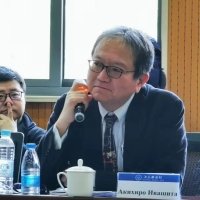

Kennan Institute
The Kennan Institute is the premier US center for advanced research on Eurasia and the oldest and largest regional program at the Woodrow Wilson International Center for Scholars. The Kennan Institute is committed to improving American understanding of Russia, Ukraine, Central Asia, the South Caucasus, and the surrounding region though research and exchange. Read more

Explore More
Browse Insights & Analysis
Assad's Reign Ends: Rebel Forces Overthrow Decades-Long Rule in Syria
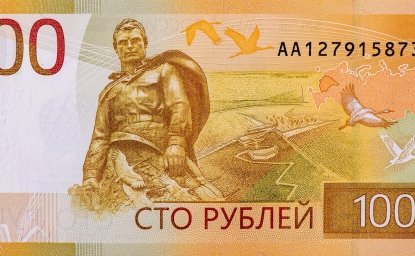
Любовь до гробовых
